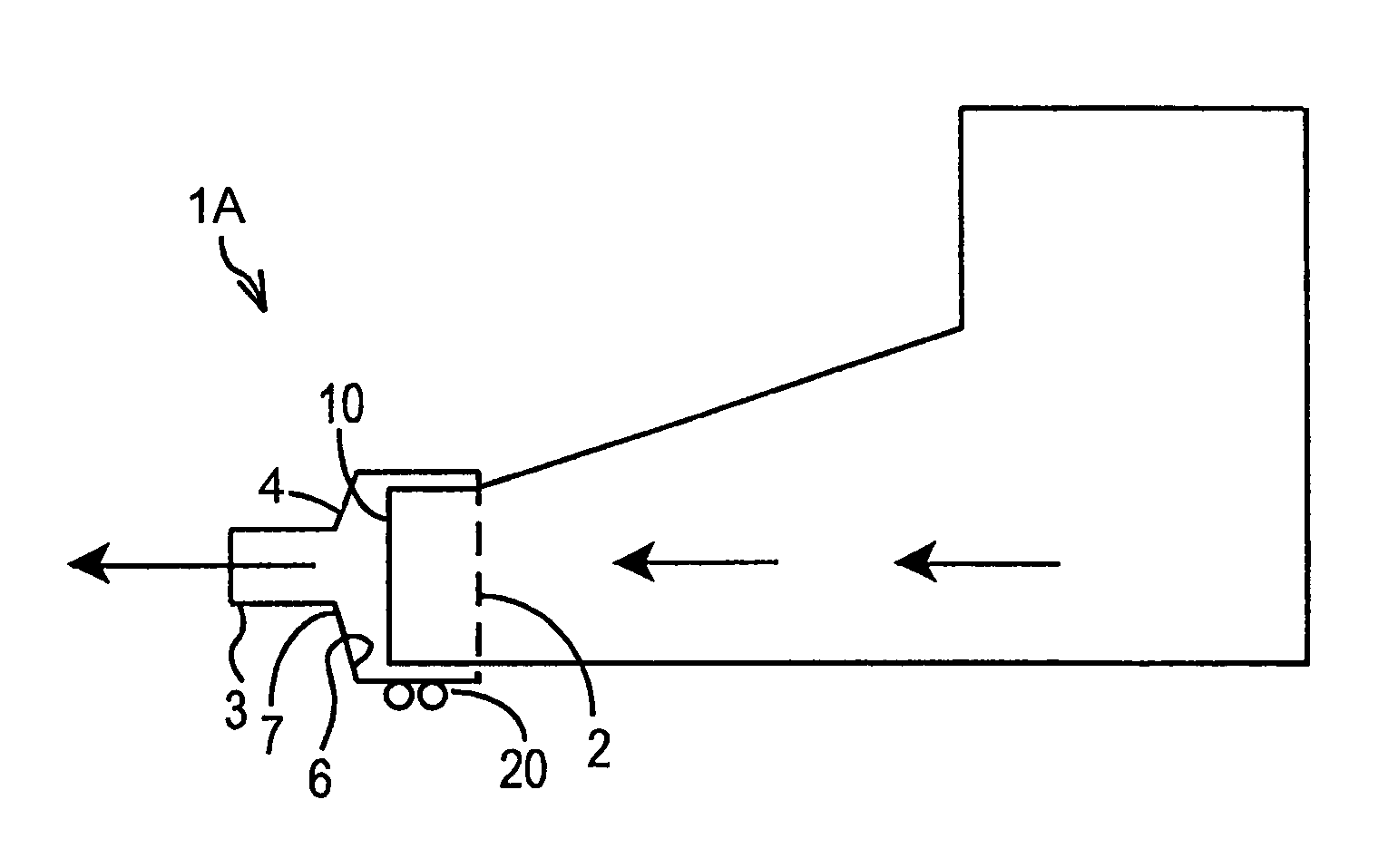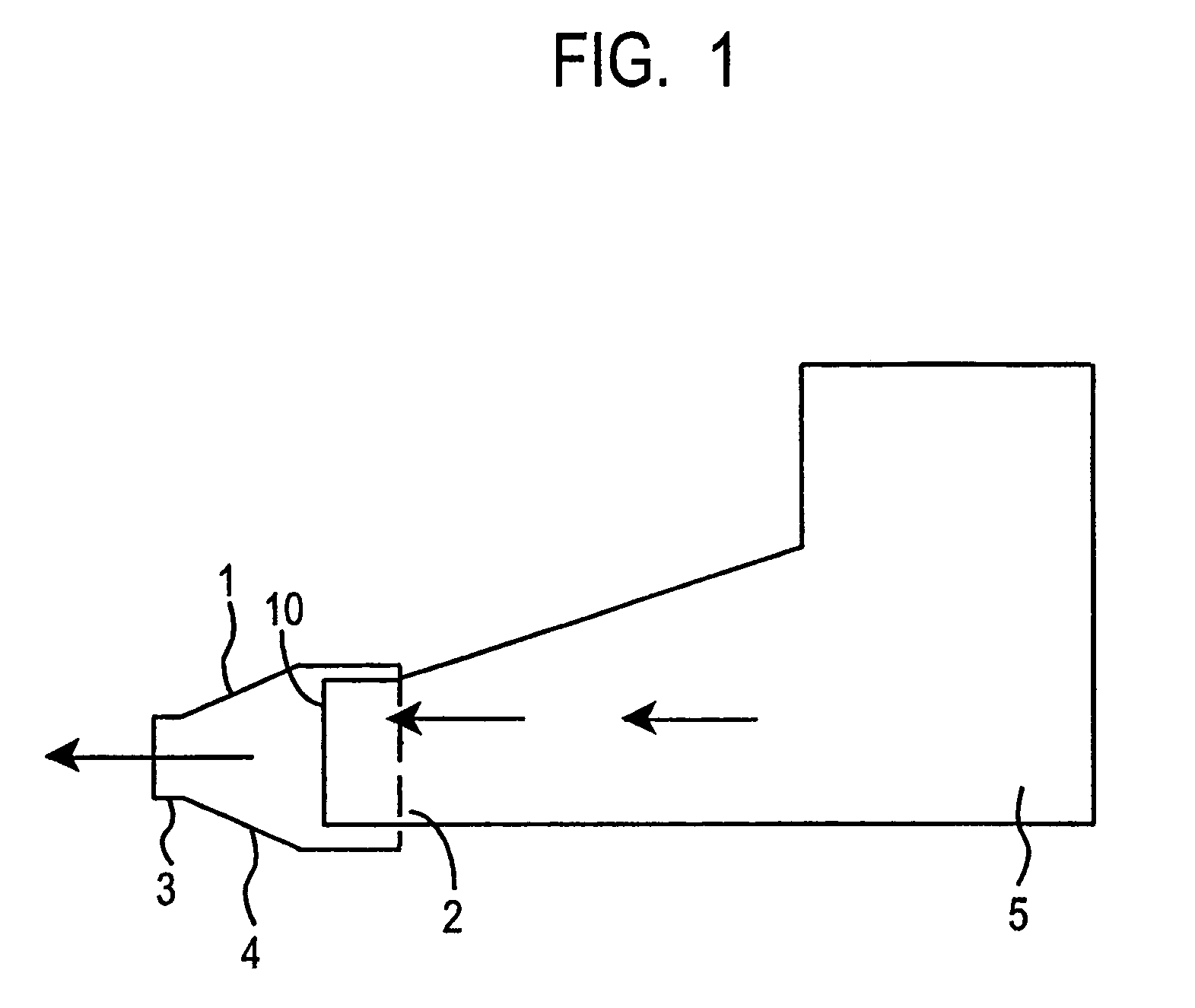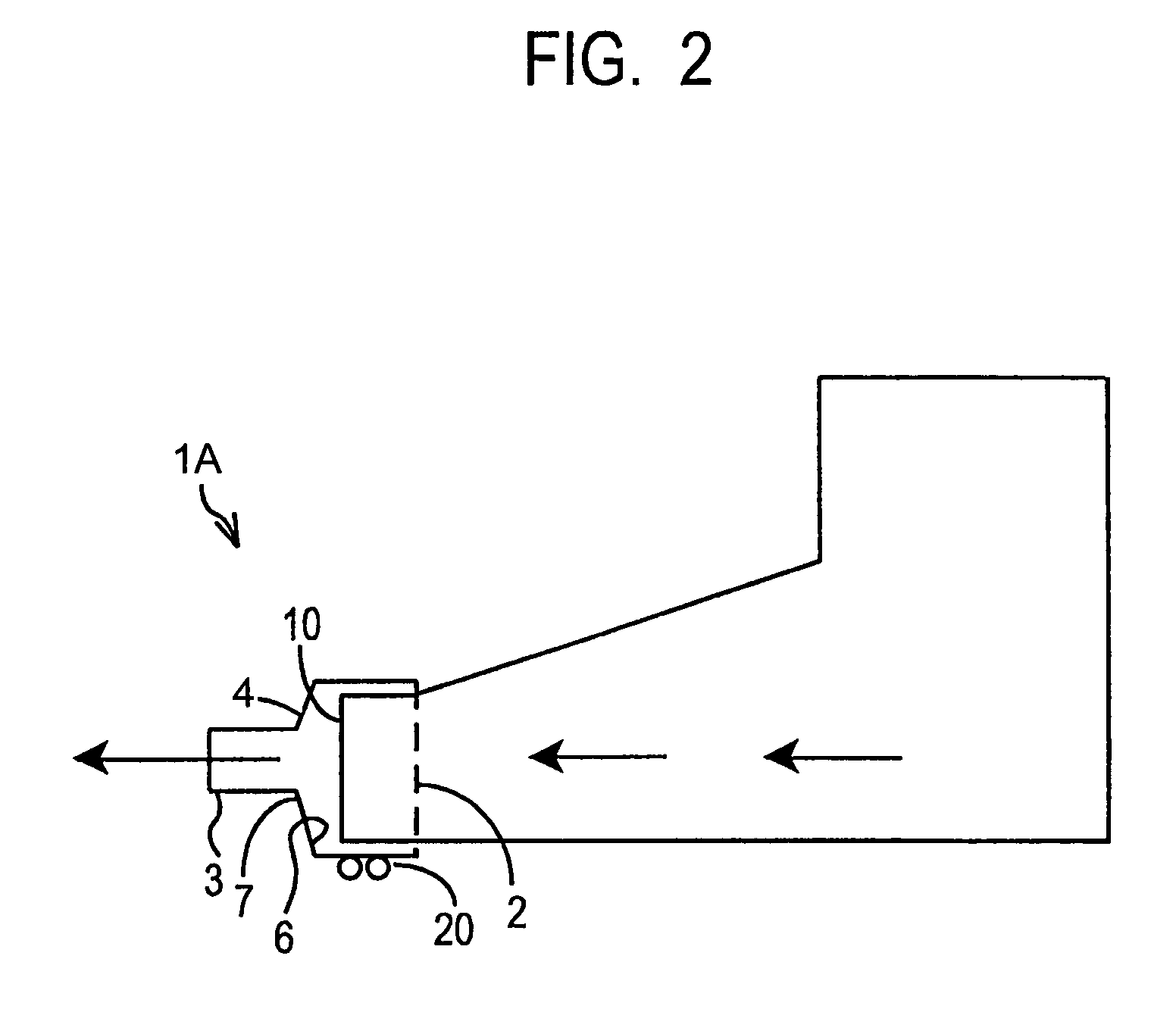Adaptors for inhalers to improve performance
a technology of adaptors and inhalers, which is applied in the field of inhalation devices, can solve the problems of inability to properly inhale the therapeutic substances needed for treatment, cumbersome mouthpieces of current devices, and difficulty in making patients properly inhal
- Summary
- Abstract
- Description
- Claims
- Application Information
AI Technical Summary
Benefits of technology
Problems solved by technology
Method used
Image
Examples
Embodiment Construction
[0022]The detailed description of the preferred embodiments illustrates the use of the adaptor with MDIs and DPIs. However, each of the described embodiments of the adaptor also can be used in conjunction with spacer devices and nebulizers.
[0023]FIG. 1 illustrates one embodiment of an exemplary adaptor, wherein an adaptor 1 is attached to the mouthpiece 10 of an inhaler 5. The adaptor is attached to the inhaler mouthpiece 10 from a connecting side 2 using an attachment means that forms an airtight seal. In this embodiment, the adaptor side is designed to create a friction fit with the inhaler mouthpiece. The friction fit is accomplished by creating the connecting side 2 of the adaptor 1 to be just slightly larger in inside dimension than the outside dimension of the inhaler mouthpiece to which it is designed to attach, and sliding the adaptor onto the inhaler mouthpiece, thereby creating an airtight seal.
[0024]The adaptor 1 also includes a transition section 4 between a mouthpiece s...
PUM
 Login to View More
Login to View More Abstract
Description
Claims
Application Information
 Login to View More
Login to View More - R&D
- Intellectual Property
- Life Sciences
- Materials
- Tech Scout
- Unparalleled Data Quality
- Higher Quality Content
- 60% Fewer Hallucinations
Browse by: Latest US Patents, China's latest patents, Technical Efficacy Thesaurus, Application Domain, Technology Topic, Popular Technical Reports.
© 2025 PatSnap. All rights reserved.Legal|Privacy policy|Modern Slavery Act Transparency Statement|Sitemap|About US| Contact US: help@patsnap.com



